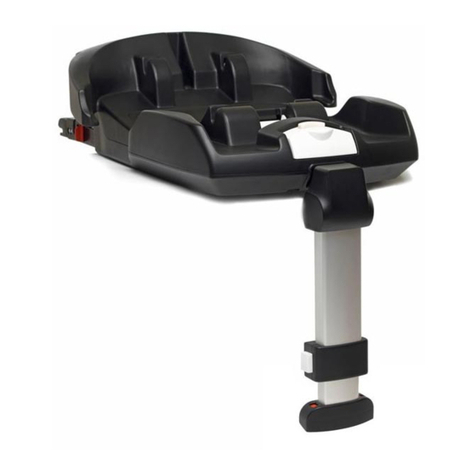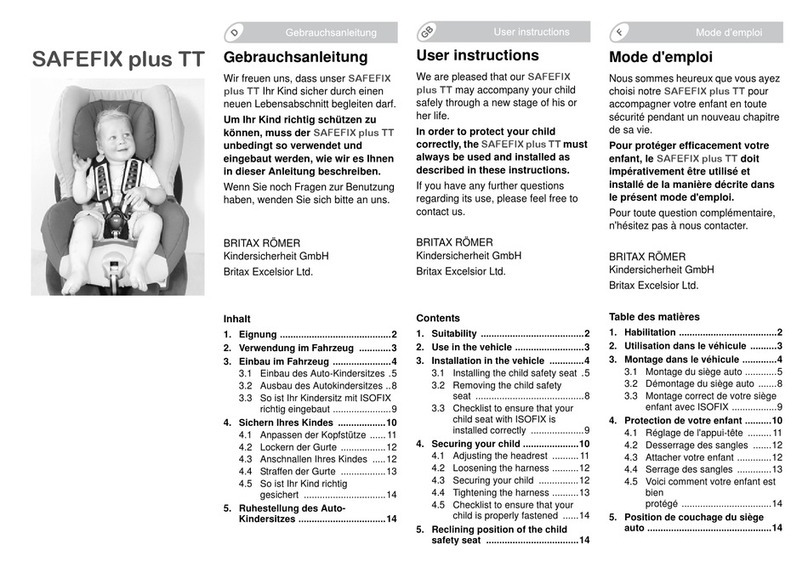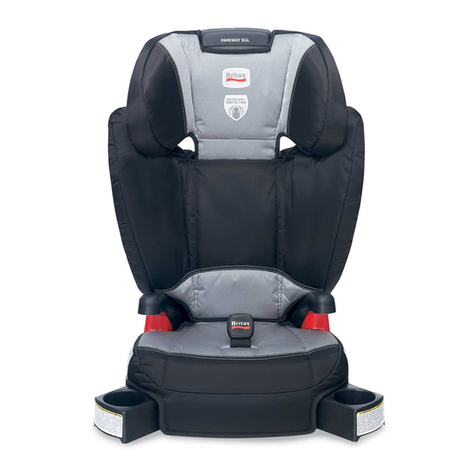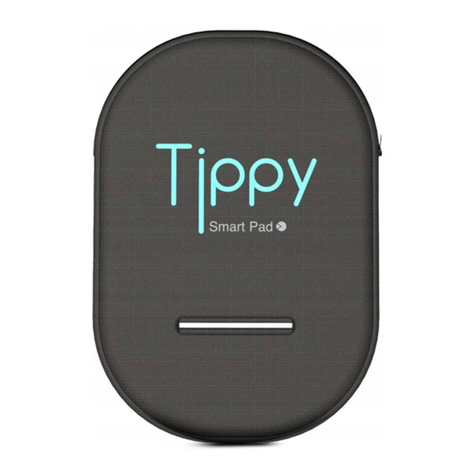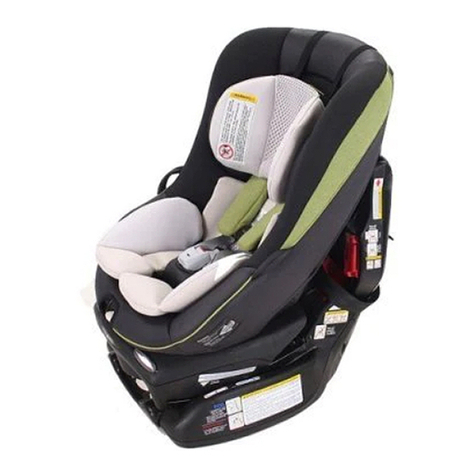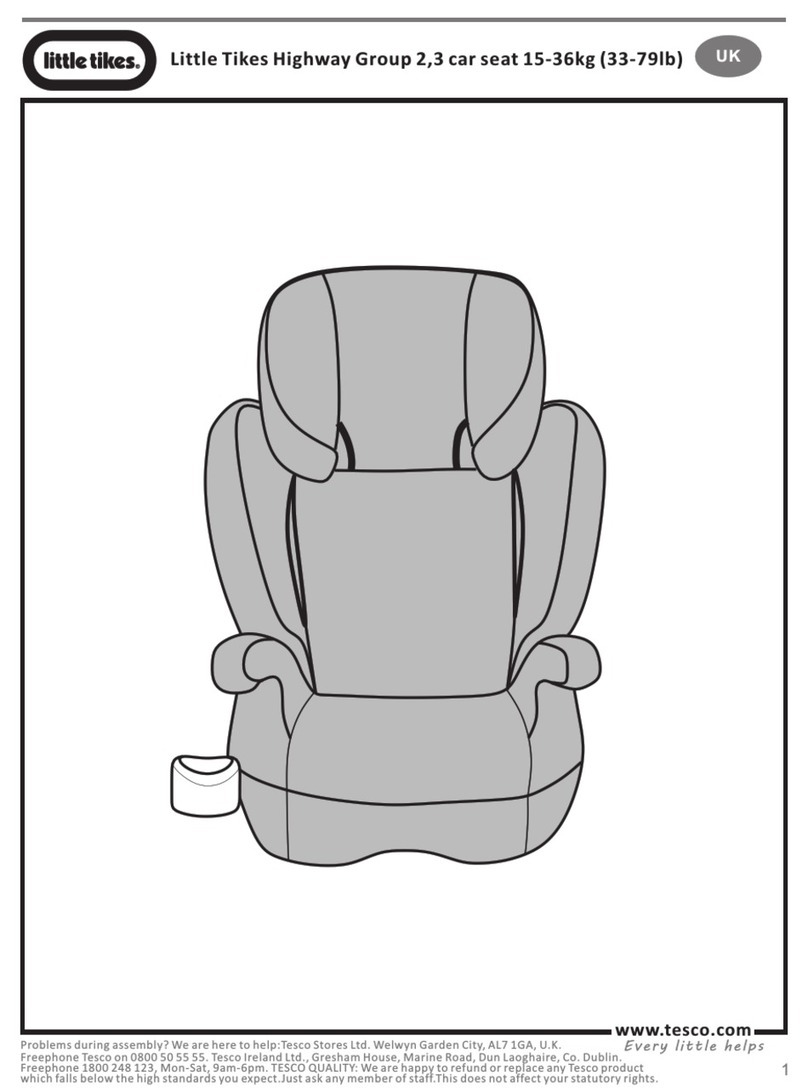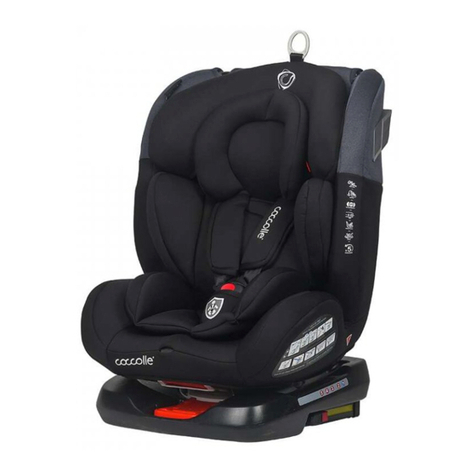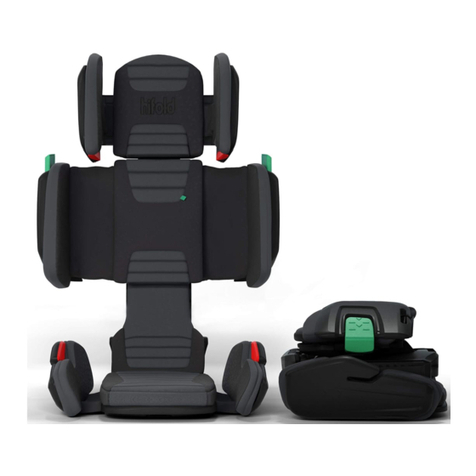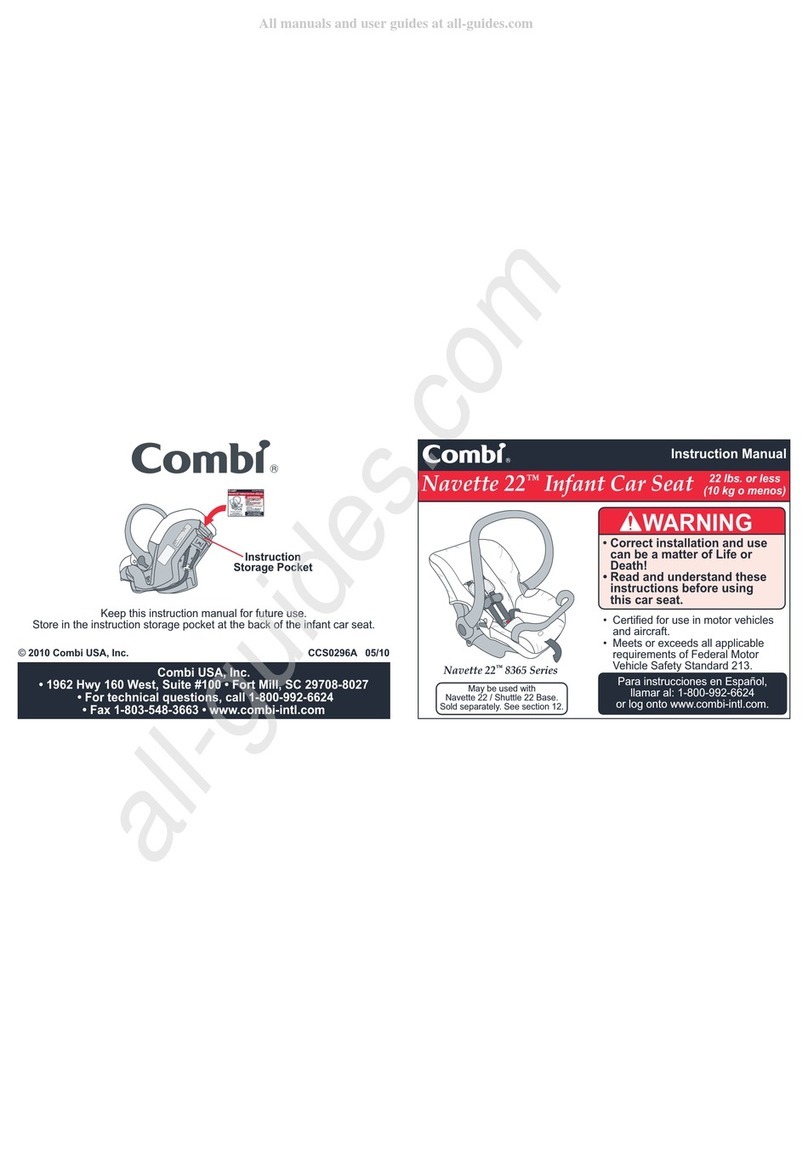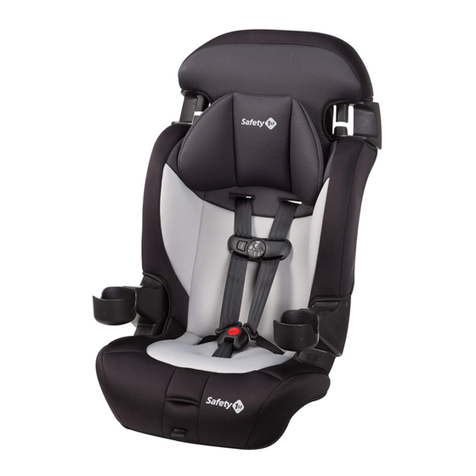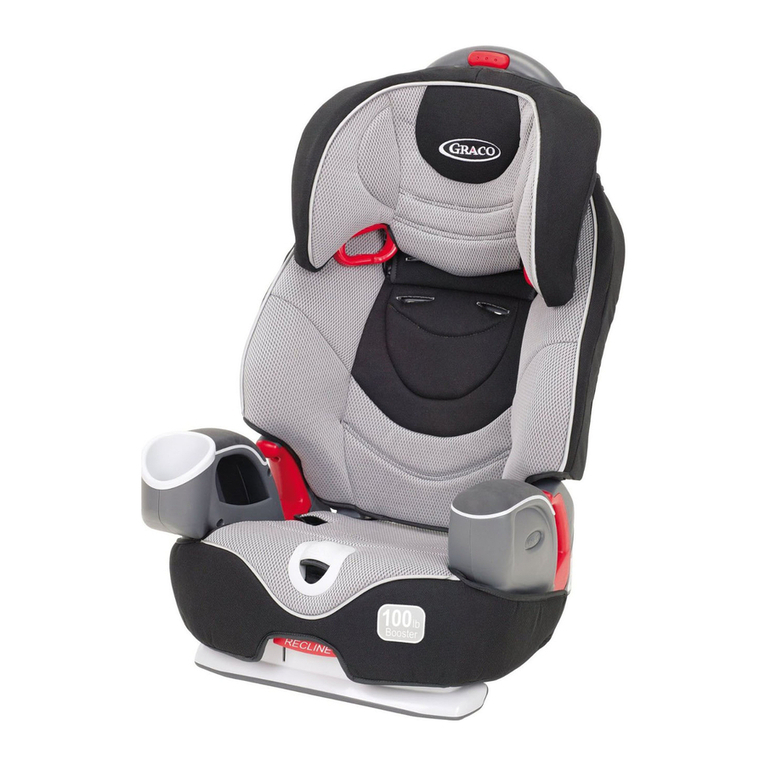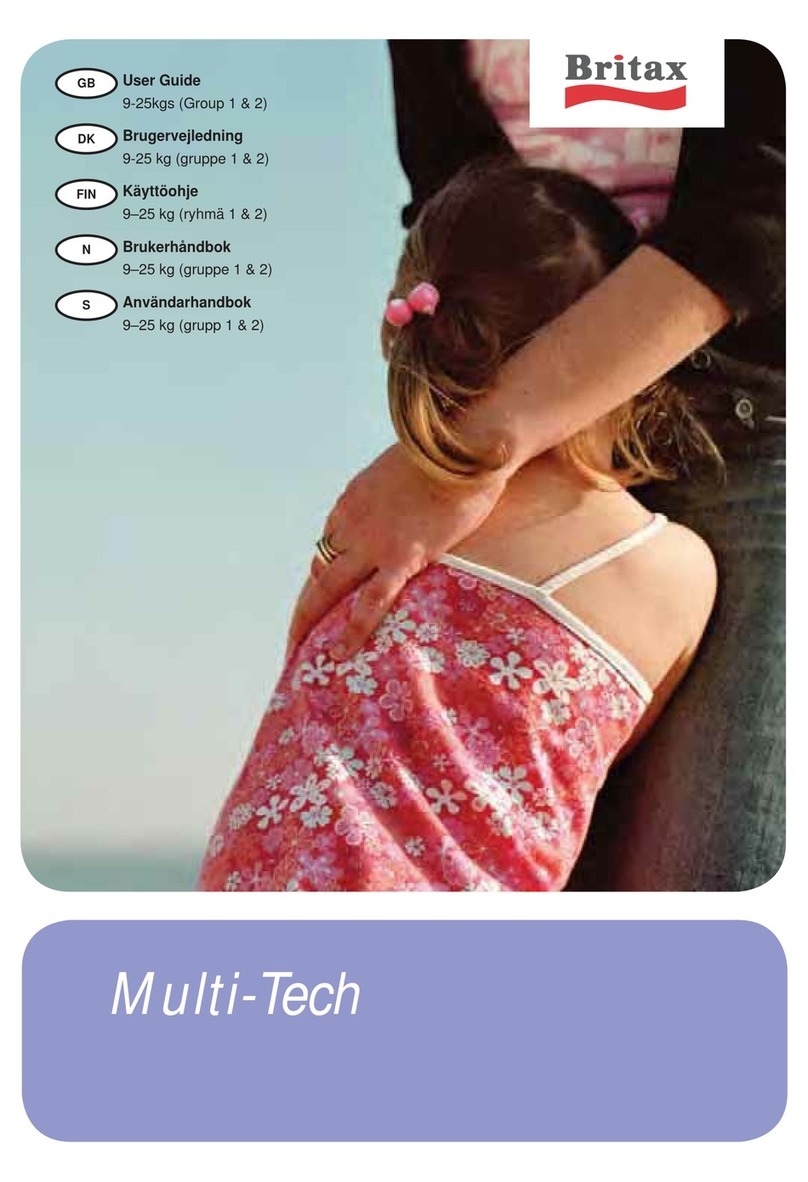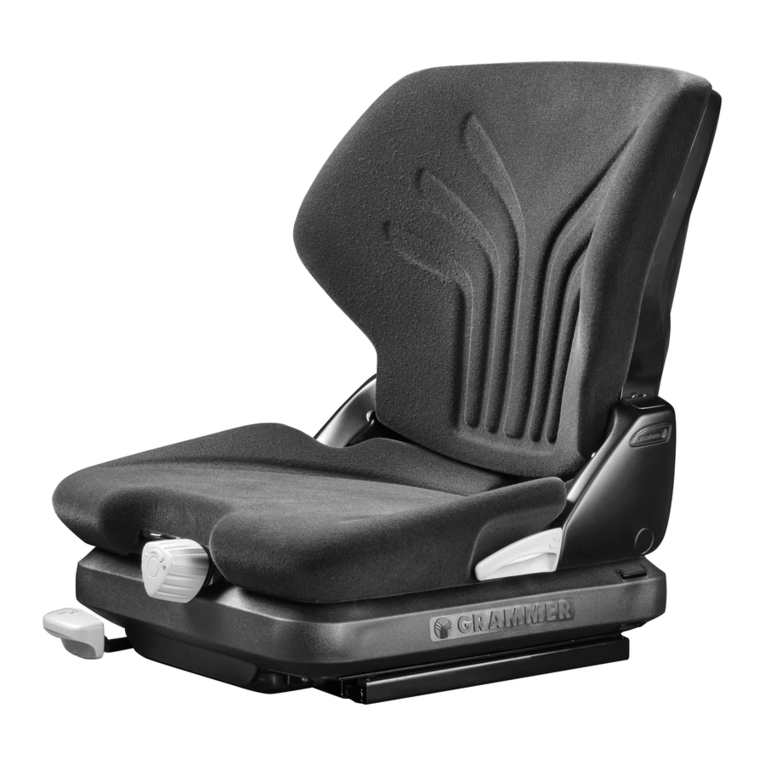Merritt Roosevelt User manual

Merritt Manufacturing
Instructions
for Use
The Roosevelt

Warnings ·····················································3
Vehicle Seat Belt Compatibility····························6
Roosevelt Features··········································8
Additional Parts············································ 10
Attaching the Tether to the Restraint·················· 12
Tilt Bar Installation ········································ 13
Installation of Positioning Devices······················· 14
Side Support Foam Installation·················· 14
Head Rest Installation···························· 15
Seat Extender Installation························ 16
Pommel (Abductor) Installation ················ 17
Adjusting Harness Height ································ 18
Adjusting the Buckle ······································ 20
Securing the Harness Prior to Installation ············· 23
Locking the Lap-Shoulder Belt··························· 24
Option 1— Locking Latch Plate ················ 25
Option 2— Emergency Locking Retractor···· 26
Option 3— Switchable Retractor ·············· 28
Checking the Stability of the Restraint ················· 29
Lap-Shoulder Belt Installation—Long Route ··········· 30
Lap-Shoulder Belt Installation—Short Route ·········· 34
Lap Belt Installation ······································· 36
Preparing the LATCH Assembly for Installation ······ 38
LATCH Installation········································ 40
Attaching the Tether to the Vehicle ···················· 42
Securing Your Child in the Restraint ··················· 44
Care and Cleaning········································· 46
Cover and Harness Removal···················· 46
Fabric Care ········································ 48
Harness and Buckle System Care ·············· 48
Cover and Harness Reinstallation ·············· 49
Warranty ··················································· 52
Revision History··········································· 54
Page 2
Table of Contents

Page 3
WARNING!
FAILURE TO COMPLY WITH THE
FOLLOWING WARNINGS CAN RESULT
IN DEATH OR SERIOUS INJURY TO
YOUR CHILD:
· Use only with children who weigh between 35 and 115
pounds (15.9 and 52.2 kg) and whose height is between
33.5 and 62 inches (85 and 157.5 cm).
· Snugly adjust the belts provided with this child restraint
around your child. A snug strap should not allow any
slack. It lies in a relatively straight line without sagging. It
does not press on the child’s flesh or push the child’s body
into an unnatural position.
· Secure the top anchorage strap provided with this child
restraint.
· Secure this child restraint with the vehicle’s child restraint
anchorage system if available or with a vehicle belt.
· Follow all instructions on this child restraint and in the
written instructions located in the pocket on the side of
the restraint.
· Register your child restraint with the manufacturer.
· For children weighing more than 48 pounds, attach the
child restraint with the vehicle’s seat belt. Do not use
the lower “LATCH” anchors.
· According to accident statistics, children are safer when
properly restrained in the rear seating positions than in
the front seating positions.
· Add-on child restraint systems should be securely belted
to the vehicle, even when they are not occupied, since in a
crash an unsecured child restraint system may injure other
occupants.
· This child restraint conforms to all applicable Federal mo-
tor vehicle safety standards. This Restraint is not Cer-
tified for Use on Aircraft.

Page 4
WARNINGS, CONTINUED
· Child restraints could be recalled for safety reasons. You
must register this restraint to be reached in a recall. Send
your name, address, e-mail address if available, and the
restraint’s model number and manufacturing date to
P.O. Box 17152 Indianapolis, IN 46217 or call 1-317-409-
0148. For recall information, call the U.S. Government’s
Vehicle Safety Hotline at 1-888-327-4236 (TTY: 1-800-
424-9153), or go to http://www.NHTSA.gov.
· Use this restraint forward facing only. The American
Academy of Pediatrics strongly encourages rear facing un-
til at least 20 lbs. and one year of age; but recommends
that you continue to rear face your child until he out-
grows the rear facing weight or height limit of his con-
vertible child restraint.
NOTE: This restraint must never be used rear fac-
ing!
· This restraint must only be used in a motor vehicle or
bus.
· This restraint must be used with the tilt bar for
children weighing 65 lbs. or less.
· Never leave a child unattended in this restraint.
· Do not modify this restraint in any way. Do not use any
accessories unless provided by Merritt Manufacturing.
· Never use this restraint if it has damaged or missing parts.
· Do not place anything between the vehicle seat and the
child restraint.
· Do not leave loose objects in the passenger compartment
of your vehicle. In the event of a crash, these objects can
become projectiles and cause serious injury or death.
· Consult with a child passenger safety technician certified
by Safe Kids Worldwide for specific vehicle seat belt in-
struction.

Page 5
WARNINGS, CONTINUED
· A list of child passenger safety technicians can be found at
the Safe Kids Worldwide website: www.safekids.org.
· A list of child passenger safety technicians that have re-
ceived training in the transport of children with special
health care needs can be found at the Automotive Safety
Program’s website: www.preventinjury.org.
· When parking your vehicle in direct sunlight, cover the
buckle to avoid burns.
· Do not use this restraint once it is older than seven years.
· This restraint must
only be installed in
forward facing vehi-
cle seats.
· Never install this
restraint in side fac-
ing (Figure A) or
rear facing (Figure
B) vehicle seats.
· According to re-
search sponsored
by the National
Highway Traffic
Safety Administra-
tion, children are
significantly safer
when properly re-
strained in the back
seat, compared to
the front seat.
A
B
Table of contents
Other Merritt Car Seat manuals

